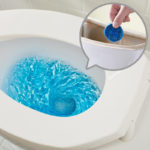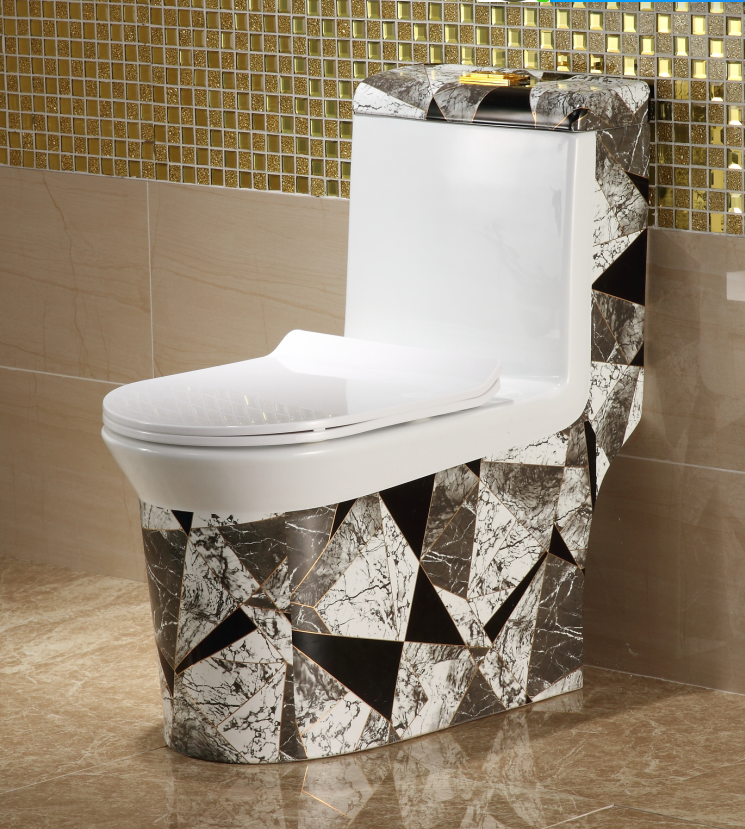How often should you change your toilet brush?
No toilet room is complete without a toilet brush. This thing is very useful on the farm. One problem is that bacteria and microbes accumulate in the place where the brush is stored. And this problem can be solved in the only radical way - by replacing the brush with another one. How often should I replace? Let's figure it out together.
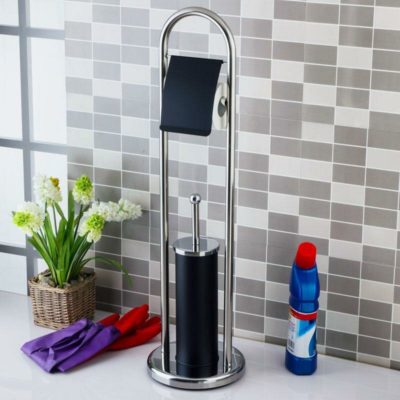
The content of the article
What types of brushes are there?
Americans and Europeans have no idea what a toilet brush is, since in their countries places of discharge of natural needs are designed completely differently. There, water is constantly supplied, and everything is washed off naturally. In our case, water enters the toilet in portions, which means that some traces of vital activity remain, which should be eliminated with an additional device. Therefore, in each of our apartments where there is a toilet, there is also a brush in the form of a brush on a handle placed in a tray. The brushes differ:
- by material of manufacture (plastic, ceramic, silicone, stainless steel);
- by storage method (floor, wall, hanging, combined);
- by color;
- by price.
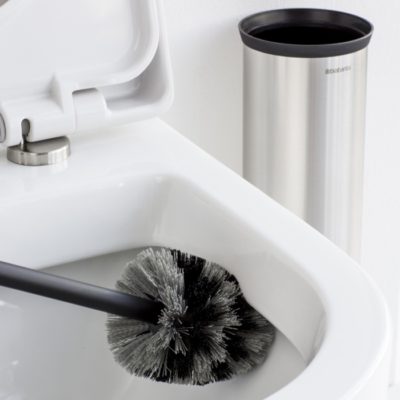
How to use it correctly
Do not hold the handle of the brush too close to the brush - this is not hygienic. First, wet the brush and apply a little antibacterial agent. Now start removing the contamination. Don't rub too hard to avoid splattering everything around.When finished, drain the tank to remove any dirt. And then press the water supply button again and rinse the brush itself in this stream. Now shake it to remove excess drops from the bristles and return it to its permanent place.
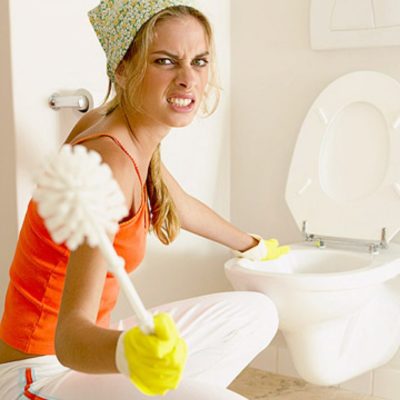
How often should it be changed
Regardless of whether you have a simple plastic brush or an expensive one, specially selected for the decoration of the bathroom, germs and bacteria will attack them in the same way. Experts advise replacing the old brush with a new one about once a quarter, so as not to bother with cleaning it. But this option is suitable only for those who use the most budget-friendly types of toiletries. And you want to keep expensive exclusive models at home as long as possible.
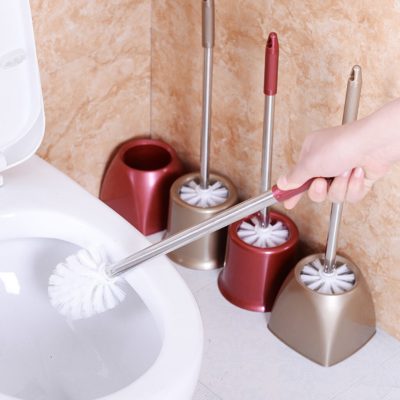
When you have to change the brush for sure:
- If you notice that the bristles have worn out, then like it or not, you’ll have to go to the hardware store for something new.
- If the brush has ceased to perform its main function - to clean the surface.
- If it's broken.
- If it starts to turn yellow.
How to extend the life of a brush
According to Elena Malysheva, the life of a toilet brush should last no more than 1 month. But our people will find a way out of any, even hopeless, situation, so they will always figure out how to delay the cost of a new acquisition. Here are some life hacks from housewives:
- leave the brush for 1 hour in a solution of bleach or chloramine, repeating a similar procedure every week;
- after each use in the toilet, rinse the brush in an antiseptic solution;
- use disinfectants when cleaning the toilet;
- After washing the toilet, rinse the brush itself and its tray.
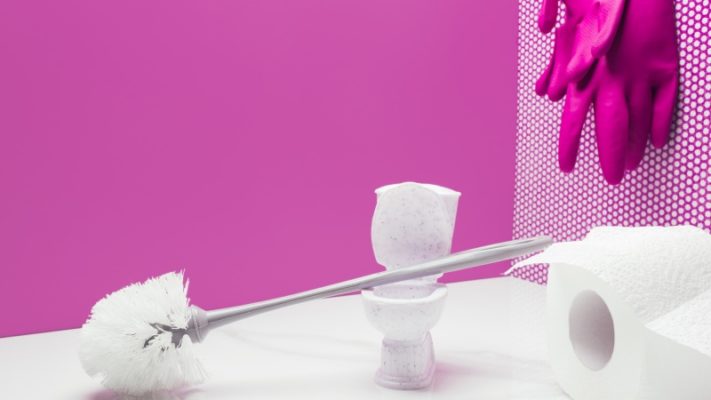
You can also use available means for disinfection:
- acetic acid;
- boric acid;
- potassium permanganate;
- hydrogen peroxide.
And if you wish, you can use this solution: 0.5 tbsp. any cleaning product, 0.5 tbsp. soda, 0.25 tbsp. vinegar and 0.5 liters of boiling water.
Using any of these methods, you will be able to extend the shelf life of your toilet brush to six months, or even up to a year.
How to choose the right brush
Since buying a new brush cannot be avoided, you should know how to choose this toilet hygiene item. What should you pay attention to first?
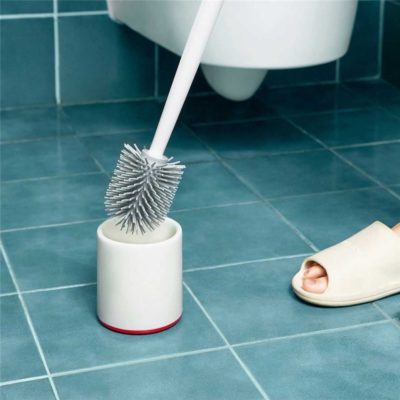
- Pen. It should be made of a smooth material, pleasant to the touch, 50–60 cm long, not bend or break too much.
- Brush. It is advisable that it be as rigid as possible, because soft fibers will not be able to fully remove dirt.
- Collapsible design. With such a brush it will be easier for you to handle - wash and disinfect all elements separately. In this case, it will be enough to replace the brush itself, and the handle and tray will remain the same.
- Design. It is advisable to choose a brush that matches the color of the walls of the bathtub or tiles so that it is not particularly noticeable. And if your bathroom has undergone expensive renovations and has luxurious plumbing fixtures, then a plastic brush will simply look out of place.
Daily toilet cleaning
The brush is used not only for removing traces of dirt from the surface of the toilet, but also for daily care of this type of plumbing. Using a brush with detergent, we first scrub the inside of the toilet, then drain the water several times, rinsing both the walls and the brush itself. After this, the brush should be immersed in water at the bottom of the toilet, adding any antiseptic such as Domestos and leave it like that for a while.
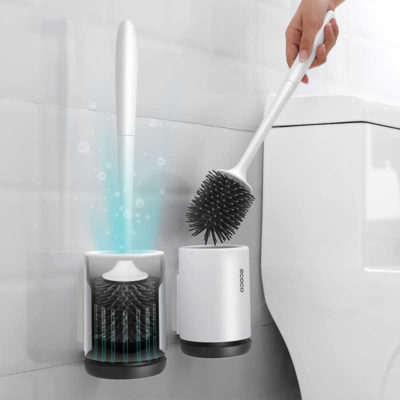
While you wash the toilet and the outside lid, it will have time to be disinfected. Lift it, let the liquid drain and return it to its normal place.From a hygiene point of view, it is best if the brush hangs over a special container where the liquid drains from it. Then the brush will dry completely, which will be detrimental to bacteria. But if this is not possible, lower the brush into a tray with an antiseptic solution.
And remember: the brush should always look like new. Otherwise, it must be replaced immediately.
To summarize, we note that people who strive for sterility can replace the brush once a month. For a large family of 5–7 people, this procedure will have to be done at least once a quarter. If 1-2 people live in an apartment, and they also spend their days and nights at work, then replacing it once every six months will be enough. And the rest of the time, care for the ruff as described above in the article.


